 We are edging slowly towards Sydney to time our arrival with our Caravan Park booking for the 1/12. It seems a little like hovering in the starting blocks before the last sprint. Yet the two places we chose to stop at have been well worth a visit. South West Rocks and the adjoining Aragon National Park is one of those places and other than a little smoke in the air, hasn’t been affected by the fires.
We are edging slowly towards Sydney to time our arrival with our Caravan Park booking for the 1/12. It seems a little like hovering in the starting blocks before the last sprint. Yet the two places we chose to stop at have been well worth a visit. South West Rocks and the adjoining Aragon National Park is one of those places and other than a little smoke in the air, hasn’t been affected by the fires.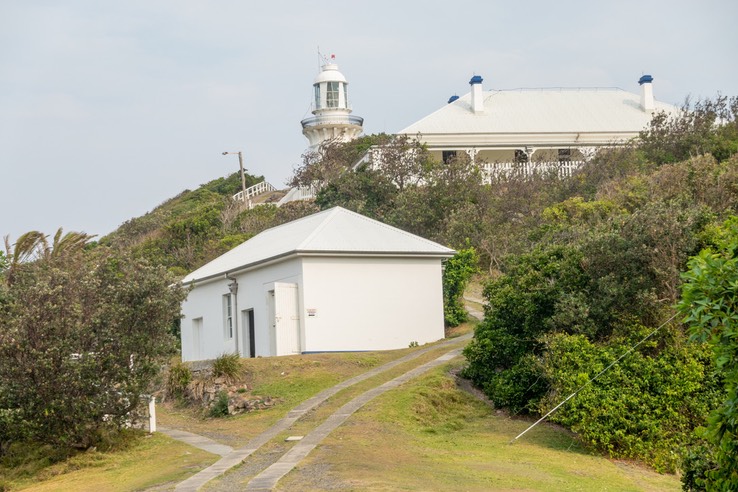 Ironically, its most spectacular look-out is called Smoky Cape. From Smoky Cape Lighthouse the view stretches across "Trial Bay” to the mouth of the Macleay River.
Ironically, its most spectacular look-out is called Smoky Cape. From Smoky Cape Lighthouse the view stretches across "Trial Bay” to the mouth of the Macleay River.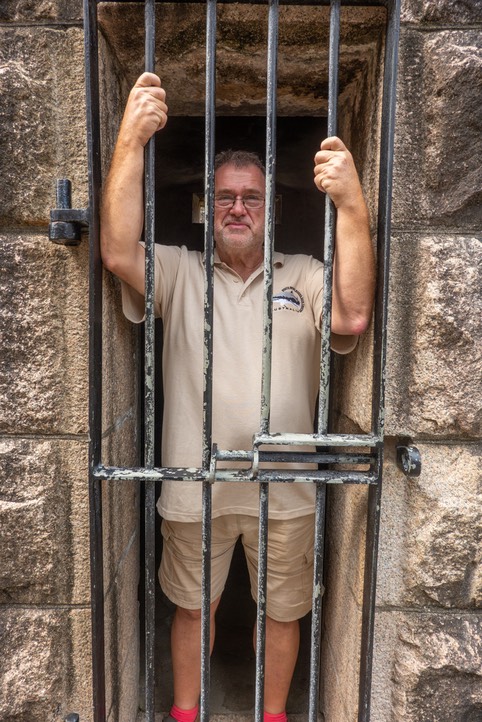 In the 19th century the bay treacherously lured ships to seek refuge from the wild seas. But when between 1863 and 1866 ninety shipwrecks were recorded, the government decided, something had to be done. So they built “Trial Bay Prison”, the first public works prison. Under harsh living conditions the prisoners were made to built a breakwater to create safe haven for boats entering the bay. The inmates often stood in chest deep water battling the elements. Many of them were unable to swim. Safe to say that the project wasn’t very successful as either workers or rocks kept on being washed away, until eventually a major flood destroyed all but a few metres of the rock wall. The project was abandoned and the prison closed.
In the 19th century the bay treacherously lured ships to seek refuge from the wild seas. But when between 1863 and 1866 ninety shipwrecks were recorded, the government decided, something had to be done. So they built “Trial Bay Prison”, the first public works prison. Under harsh living conditions the prisoners were made to built a breakwater to create safe haven for boats entering the bay. The inmates often stood in chest deep water battling the elements. Many of them were unable to swim. Safe to say that the project wasn’t very successful as either workers or rocks kept on being washed away, until eventually a major flood destroyed all but a few metres of the rock wall. The project was abandoned and the prison closed. 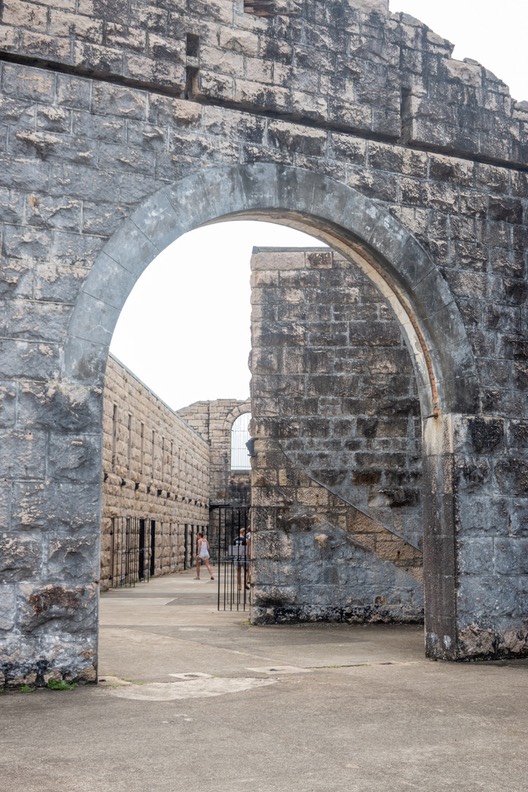 It only came back into use in WWI when “enemies of the British Empire” were interned there. They were people of German or Austrian decent living in Australia and those detained by the British in Asia. The 586 men ran the prison mostly in self administration and later established a bakery, butcher shop and a hospital run by an interned orthopaedic surgeon. They also organised tennis matches, soccer games, theatre plays and concerts to overcome the isolation from their families and mental anguish. Today, the prison is a happy place for the parks kangaroos.
It only came back into use in WWI when “enemies of the British Empire” were interned there. They were people of German or Austrian decent living in Australia and those detained by the British in Asia. The 586 men ran the prison mostly in self administration and later established a bakery, butcher shop and a hospital run by an interned orthopaedic surgeon. They also organised tennis matches, soccer games, theatre plays and concerts to overcome the isolation from their families and mental anguish. Today, the prison is a happy place for the parks kangaroos.
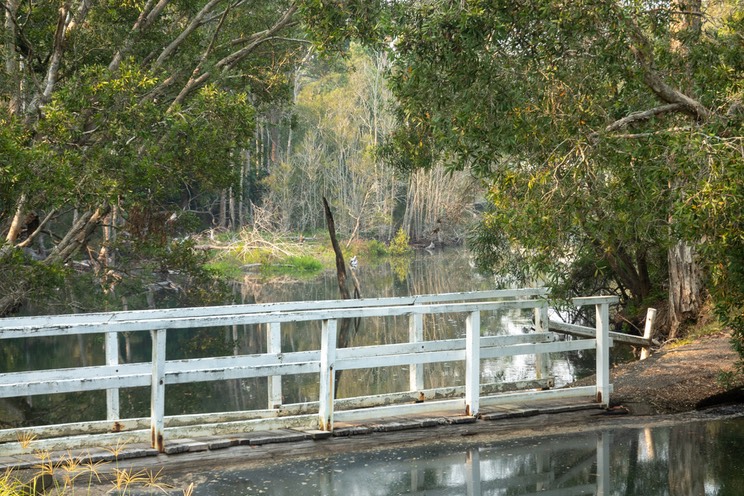
Just a hop away, so to speak, is the town of Newcastle, the second most populated city in NSW. We passed Newcastle many times travelling north from Sydney. But thinking of it as a mere industrial town we never took a closer look.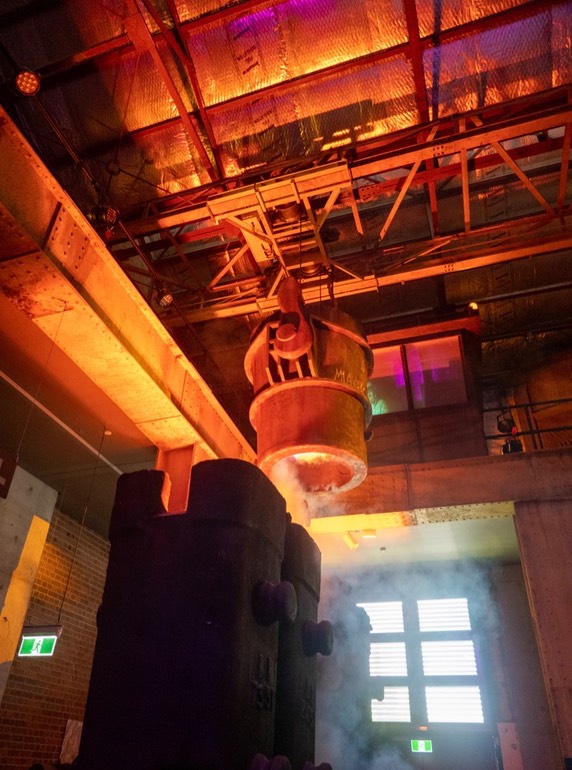 Today coal mining is still going strong keeping Australias oldest export harbour busy while steel production ceased in 1999 when BHP transferred all production to Port Kembla near Wollongong. The Newcastle Museum, housed inside one of the old train workshops, incorporates both, a coal and a steel section with a dramatic demonstration of olden day steel smelter activity.
Today coal mining is still going strong keeping Australias oldest export harbour busy while steel production ceased in 1999 when BHP transferred all production to Port Kembla near Wollongong. The Newcastle Museum, housed inside one of the old train workshops, incorporates both, a coal and a steel section with a dramatic demonstration of olden day steel smelter activity.
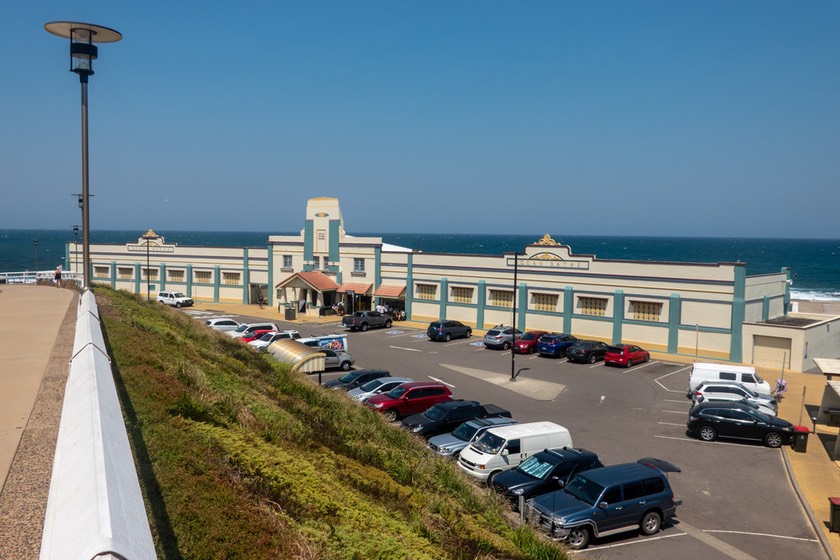
Two other rooms deal with the 1989 earthquake. They show large photos and testimonies of Newcastle residents and emergency workers who were affected by the 5.9 magnitude quake, with shock waves even felt by us in Sydney. We had set up camp at Stockton beach opposite the town centre and took our cycles onto the ferry across the harbour. From Queens Wharf a wonderful cycle and walking path runs along the coast line. We cycled along men removing fencing from this weekends car race to Nobby’s Beach, where in 2007 the Japanese carrier Pasha Bulker ran aground. A few hundred metres further we found the large Ocean Baths with its Art Deco pavilion.
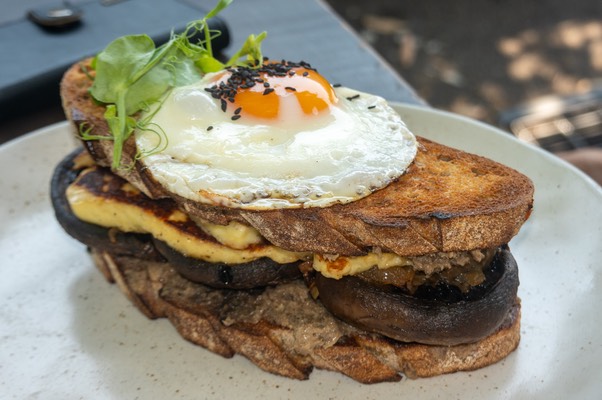 Above on a hill Fort Scratchley stood guard. It remains the only location in Australia where shots have been fired at an enemy vessel, in this case a Japanese submarine in 1942.
Above on a hill Fort Scratchley stood guard. It remains the only location in Australia where shots have been fired at an enemy vessel, in this case a Japanese submarine in 1942.
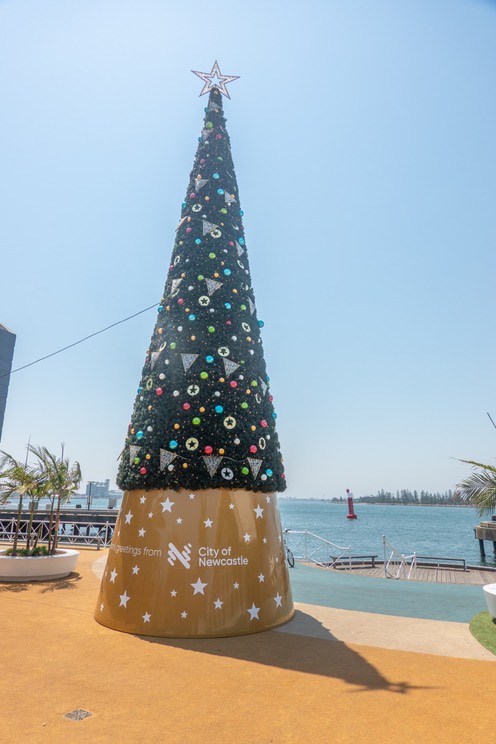
As it was close to lunch time we made our way to Darby Street and its multi-national restaurants and new age cafés. At “Autumn” we consumed a delicious Mushroom- Haloumi Toastie with caramelised onions and truffle paste, topped with an egg. Cycling through the city, past parks, the cathedral and other interesting architecture, we realised that there is much more to Newcastle than coal and refineries. But we were a little shell shocked by the busy traffic and the amount of people. Probably a good preparation for Sydney. Kids, get ready! We are coming!!!
Adieu till next year, when we’ll be back on our boat, the Freshwater, heading towards the Danube. (You can follow us there on www.robos.com.au.)
Merry Christmas to you all and a Happy and Healthy New Year!